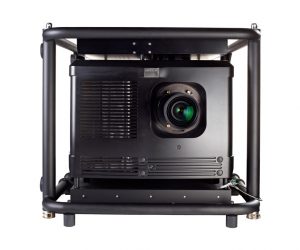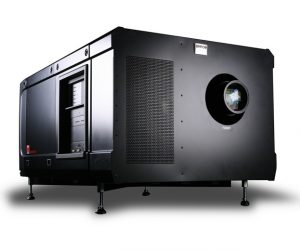
Barco OpSpace: KVM Killer
You could argue that the more information you have, the better decisions you can make. And to a certain extent, that is true. However, an overload of information can quickly overwhelm you and cloud your vision. In control rooms, handling information overload is a daily challenge for operators, one that can be made easier with operator workspace solutions, such as Barco OpSpace.
CONTROL ROOMS: A POTTED HISTORY
Since the early days of control rooms, operators have always relied on big overview screens to display data that cannot be presented together on the operator workspace. The overview video wall typically shows maps, grids, dashboards, graphs, and status overviews, which benefits everyone in the control room. Depending on the needs and requirements of the control room, this can be an LCD, LED or rear-projection video wall. In addition, smaller operator screens and workstations provide complementary information that enable users to focus on specific tasks and information streams. This way, they can see the bigger picture and work on the details.
MORE SOURCES, MORE CLUTTER
But control rooms have evolved since. In order to make better and more informed decisions, control room operators today depend on more data and information than ever before, and as a result they feel the need to keep on adding more OT and IT content sources to their personal digital workspaces.
To cope with this information growth, operators are not only using more display monitors, but they also have to control multiple keyboards and mice, because applications exist on separate networks and have to be managed through different computers.
ENTER THE KVM SWITCH
The traditional KVM (short for Keyboard/Video/Mouse) switcher somewhat alleviated that problem. A KVM enables users to operate multiple computers with a single keyboard, mouse, and display. They can use a KVM to manually switch from displaying one system to another, but on the same screen.
KVM switchers free the operator from having multiple keyboards and mice on the desk, while allowing application PCs to be placed in separate server rooms or technical locations, making the operator work area less heated and noisy.
Unfortunately, KVM switchers have not brought an end to information clutter. For one thing, with a traditional KVM, the possibilities for showing multiple applications on one screen are rather limited. For example, a basic KVM does not allow users to interact with systems side by side on one screen (multi-windowing). Dragging one window to a specific screen to combine this with related data from another computer is therefore impossible. Also, switching from one source to another on the same screen still means that you must make a manual switch. In practice using a basic KVM means that operators need multiple display monitors for multiple applications being shown at the same time, which in many cases leads to a nearly unmanageable clutter of screens.
MULTIPLE DISPLAYS, ONE PIXEL SPACE
Although a KVM reduces the clutter of multiple input devices, the visual area for the operator can still be a cumbersome patchwork of content sources, rigidly separated by monitor bezels. Worse still, if the number of sources is more than the number of monitors, it means that you have to manually switch content every time you need to consult a source. With so-called ‘KVM over IP’ switches, this has improved to a certain degree. KVM over IP allows you to go from one screen to another with your mouse. But the possibility to show multiple sources on the same display monitor, in a multi-viewer mode, remains limited.
This has changed with Barco OpSpace. Based on years of customer feedback, Barco product design engineers know that the easier it is to access and manage information on just one main screen, the faster it is to make critical decisions. The logical next step is therefore to treat multiple monitors as one big ‘virtual’ pixel space and allow the operator to freely open, move, and position multiple sources across that virtual canvas at the same time.
With OpSpace, Barco has effectively created a hardware and software layer that can turn any number of existing multiple displays into one pixel space, leaving the operator with many more options in terms of arranging and calling up content.
OPERATOR-CENTRIC
With OpSpace, Barco has surpassed the capabilities of a KVM over IP solution. By leveraging additional functionality, such as a ‘Follow Me’ function that saves all user settings upon login and an easy user interface with layouts and perspectives, operators can easily access video, images, and data in one or more software-defined layouts that are convenient to them. Once these layouts are defined and set, operators can launch them with just one click.
Barco OpSpace also allows operators to arrange their content based on the tasks they need to perform. It’s the operator-centric design approach that allows them to manage the arrangement of key content sources for moments where every second counts. Furthermore, OpSpace runs over a standard IP network, so there is no limitation to the number and type of sources to be monitored, or the number of OpSpace workspaces that can be connected and commissioned.
Discover how Barco partners have integrated Barco OpSpace into their own workspace solutions.
MANAGING THE INFO MIX
A solution such as Barco OpSpace particularly shines in environments which monitor many different applications from one or more secured network layers. This wide variety of content is gradually becoming the general rule in a growing number of markets:
- In utilities control centres, operators need to monitor a variety of dynamic data, such as grid overviews, but also maps that depict the area serviced.
- In oil & gas central control rooms, operators need to monitor asset health status, field sensor information dashboards, offshore asset maps, and standard operating procedures for field workers.
- In traffic management centres, video walls and operator workstations typically display maps, road camera footage, social media feeds, and other sensor information.
- At airport operations centres, centralised control rooms are monitoring a combination of flight data, passenger flows, baggage handling, security camera feeds, and weather information.
- In healthcare operations centres, operators monitor every aspect of the hospital, including the movements of ambulances outside the hospital, the flow of patients in the emergency department, the usage of operating rooms, the maintenance of all hospital assets, and the availability of patient beds.
- In network operations centres, operators monitor a variety of corporation transactional and trading data, deal statuses, and other real-time financial, manufacturing, and network health information.
Displaying all this information in an ergonomically efficient way not only creates better working conditions for the operator but also lays the foundation for smarter decisions and better crisis management. — Shane O’Reilly, Barco Sales Enablement Manager, Control Rooms
Barco: (03) 9646 5833 or www.barco.com















RESPONSES